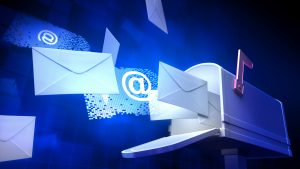
4 Key Considerations for Email Marketing
By Rebecca Bullard, Creative Director of Matice
Email marketing is a great way to stay in front of potential and current customers. I’m sure you’ve all heard the phrase, “Out of Sight, Out of Mind.” Well, occasional email updates will keep you in mind. Here are a few quick tips to get you started on your way to crafting and sending compelling email campaigns to potential customers. You may be just getting started with email marketing and you can’t even figure out where to start, or you may already be using email to reach customers. Either way, it’s a good idea to reevaluate your 4 S’s periodically and switch up your strategy to keep improving. So onto the first S:
Software
If you already have an active account and currently use that email marketing software, you may wish to skip ahead. Or you may consider a switch, your call! This month, Website Magazine featured a Top 50 Email Marketing Solutions article (read it here) Here are a few of the most common email marketing services and some info about them to help you make a choice.
- Constant Contact – You’ve probably heard of it. It’s the industry standard and made #1 on Website Marketing’s Top 50 list. Constant Contact features pre-made and customizable email templates in addition to the ability to create completely custom HTML templates. If you’re serious about email marketing and you’ve got a budget to support it, CC is a good choice.
- MailChimp – I think MailChimp is a great place for small businesses with small lists to start. I recommend MailChimp because their basic level account is free (no support, up to 2000 subscribers). Overall MailChimp has edged the competition regarding design. They have a very clean and user-friendly dashboard and also drag-and-drop email design templates. (p.s. MailChimp was ranked #2)
- AWeber – AWeber is a leader in email marketing with a minimal user-friendly interface. Also AWeber boasts one of the highest deliverability rates in the industry. It’s designed for a more advanced use than MailChimp. This is a paid service, but it’s not as pricey as Constant Contact. (AWeber was ranked #13)
Subscribers
The next important consideration for starting or reevaluating your email strategy is your list. Take a good hard look at your email subscriber list. If you’re new and don’t have a list yet, start collecting emails. You can do this in person, or create a sign-up form and share it on your website and via social media outlets. Giving users a small incentive may give enough of a nudge to persuade them to cough up an email address.
Tip: Get creative and segment your subscribers out in a relevant way. Perhaps you have a list of females vs males so in the future you could target one or the other.
If you already have a subscriber list, then you may want to think about ways to grow your list. You should also go through past email campaign stats and clean up (read: delete) addresses that bounce or fail more than once (if your email software doesn’t do this for you already).
Subject Line
When your list is all set and you’re ready to send your next (or first) email blast, you should spend some time really crafting your email subject line. Why? Because the subject line is the first impression of your email. When your subscriber checks the email inbox, they will immediately decide whether an email is worth reading or should be trashed before even clicking on it. The most thoughtfully crafted body message is useless if it never sees the light of day!
Tip: The other half of your first impression, is the “From” line in your email. These two are critical. Consider using your real name and being clear about who the email is from as to not confuse people. They should recognize instantly who the email is from.
Schedule
Having a schedule can be an important part of your email marketing strategy. If you want to inform your followers about regular events coming, perhaps a monthly email outlining this month’s upcoming events would be a great way to go. But in addition to that, maybe 1 week prior to each event there is a reminder email sent specifically about that event. Your audience will be accustomed to your schedule and it will bring organization to your email marketing strategy. On the flip side, sending emails at random could also be beneficial because your emails could catch your audience off guard and they may be more likely to check into an email out of the blue. Or maybe your schedule is a mix of some regularly-timed with some surprises sprinkled in. Whatever you decide on, stick to it and remember to keep going. Every time you send an email you put yourself in front of your audience and prevent “Out of sight, out of mind.”
Hopefully this article has given you some things to consider and will help you become a bit more email marketing savvy. One last tidbit I’ll give you based on a subscriber’s perspective… The email blasts from a particular blog I’m subscribed to always lands in my primary inbox and I almost always click to read. What’s their secret? Well I know they use AWeber and they don’t use an email template at all. It just a text email that always begins with a personalized greeting and then a short message that seems to be written from a friend. They are sometimes funny and they are always helpful and interesting with links out to resources on the blog. You don’t always have to use a fancy template, sometimes a warm email from a ‘friend’ works even better. If you’d like to learn more about how email marketing can help your business, please contact Matice – info@matice.com.



